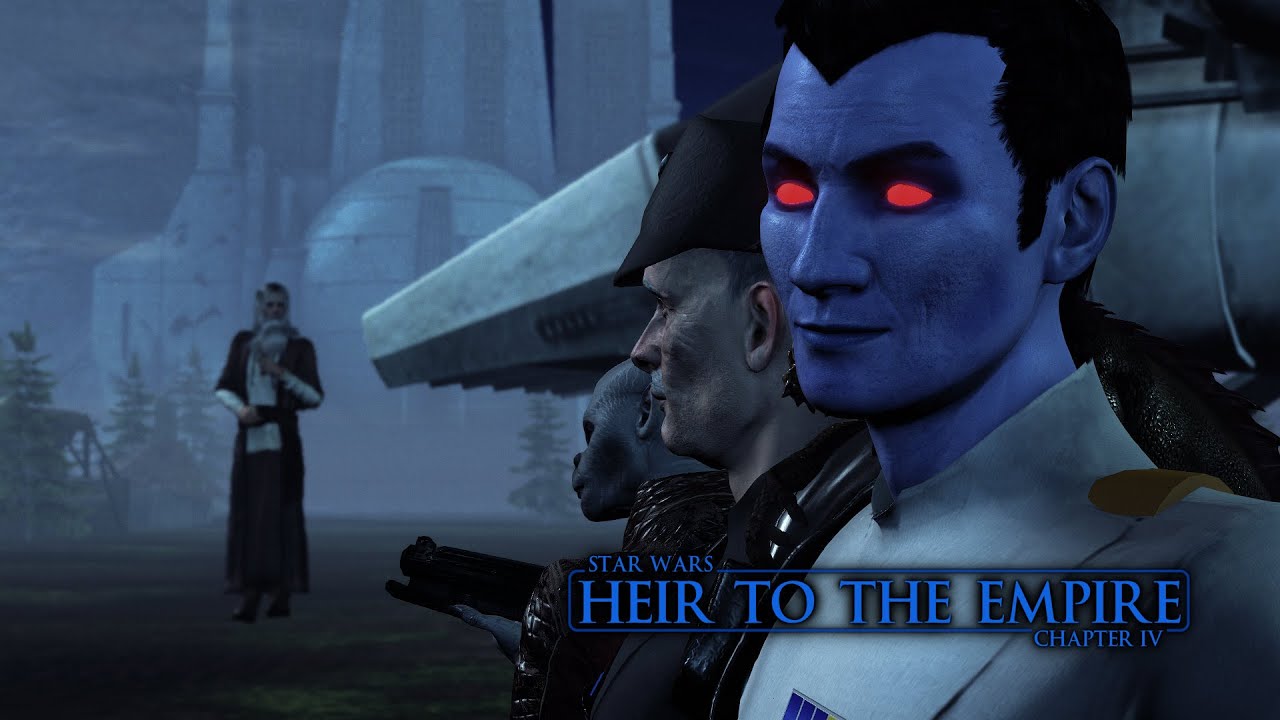The Jedi Purge, also known as Order 66, was a pivotal event in the Star Wars universe that led to the near-extermination of the Jedi Order and the rise of the Galactic Empire. This cataclysmic period, orchestrated by the cunning Sith Lord, Emperor Palpatine, is a tale of betrayal, loss, and the devastating consequences of gambling with the fate of the galaxy.
This comprehensive analysis will examine the background and motivation behind the Jedi Purge, as well as its impact on the galaxy at large. It will also delve into the powerful emotions and allegiances that influenced key characters, ultimately leading to the high-stakes gamble that shaped the course of the Star Wars saga.
The Jedi Order: Guardians of Peace and Justice
1.1. The Jedi Code and Philosophy
The Jedi Order, guardians of peace and justice in the galaxy for thousands of years, was an organization of skilled Force-sensitive individuals dedicated to protecting the innocent and preserving balance. Central to their beliefs was the Jedi Code, a set of tenets that guided their actions and their understanding of the Force. These principles emphasized self-discipline, knowledge, harmony, and the importance of selflessness in service to the greater good.
1.2. The Jedi Council
The Jedi Order was governed by the Jedi Council, a group of wise and experienced Jedi Masters responsible for guiding the Order and making key decisions. The Council operated from the Jedi Temple on Coruscant, where they trained new generations of Jedi and monitored the state of the galaxy. The members of the Council were highly respected within the Order and held great influence over its direction and priorities.
1.3. The Jedi and the Force
The Jedi believed in the existence of the Force, an all-encompassing energy field that connected all living things. They were able to tap into this power through rigorous training, meditation, and adherence to the principles of the Jedi Code. The Jedi sought to understand and serve the Force, utilizing its powers for the benefit of the galaxy while avoiding the temptations of the Dark Side.
The Sith: The Ancient Enemy
2.1. The Sith Code and Philosophy
The Sith, guided by their thirst for power and their belief in the Dark Side of the Force, had been in hiding for centuries, plotting their return to prominence. Their philosophy, as expressed in the Sith Code, centered on the pursuit of power, the embrace of passion and emotion, and the belief that the strong should dominate the weak. This stark contrast with the Jedi Code fueled the long-standing conflict between the two orders.
2.2. The Rule of Two
To ensure their survival and maintain their secrecy, the Sith adhered to the Rule of Two, a principle that dictated there should be only two Sith at any given time – a master and an apprentice. This system, established by Darth Bane, was designed to prevent infighting among the Sith and to concentrate their power and knowledge.
2.3. The Sith and the Dark Side
The Sith sought to harness the power of the Dark Side of the Force, drawing upon their emotions and desires to fuel their abilities. This approach granted them immense power but often came at a great personal cost, as the Dark Side was known to corrupt and consume those who embraced it. The Sith’s pursuit of power and control ultimately led them into direct conflict with the Jedi and their ideals of peace and balance.
The Galactic Republic: A Fragile Democracy
3.1. Structure and Governance
The Galactic Republic was the democratic government that governed the galaxy for thousands of years prior to the rise of the Empire. It was composed of thousands of member worlds, each represented by a senator in the Galactic Senate.
The Senate, based on the capital planet of Coruscant, was responsible for creating and enforcing laws, maintaining diplomatic relations, and overseeing the bureaucracy that kept the Republic running. The Chancellor, elected from among the senators, served as the head of the government and wielded considerable influence over the Senate’s decisions.
3.2. Corruption and Inefficiency
Despite its democratic ideals, the Galactic Republic was plagued by corruption and inefficiency. Powerful corporations and special interest groups manipulated the Senate to serve their own agendas, often at the expense of the common people. Additionally, bureaucracy and political gridlock made it difficult for the Senate to effectively address the various crises facing the galaxy.
3.3. The Clone Wars and the Republic’s Decline
The Clone Wars, a galaxy-wide conflict between the Galactic Republic and the Separatist Alliance, further strained the Republic’s already fragile structure. As the war raged on, the Senate granted the Chancellor emergency powers to deal with the crisis, further centralizing authority and paving the way for the eventual rise of the Empire.
The Clone Wars: A Divisive and Destructive Conflict
4.1. Origins and Causes
The Clone Wars, fought with massive armies of cloned soldiers and droid forces, were triggered by the secession of numerous star systems from the Galactic Republic to form the Confederacy of Independent Systems (CIS), also known as the Separatist Alliance. These systems, disillusioned by the corruption and inefficiency of the Republic, sought to create their own government, independent of the Senate’s control. However, behind the scenes, the Sith orchestrated the conflict to weaken both sides and create an opportunity for their own rise to power.
4.2. The Jedi’s Role in the Conflict
The Jedi Order was heavily involved in the Clone Wars, with many Jedi serving as generals in the Republic’s military. This involvement, however, strained the Jedi’s principles of peacekeeping and neutrality, as well as their relationship with the Senate and the Republic’s citizens. It also provided Palpatine with the opportunity to further manipulate the Jedi and to consolidate his own power.
4.3. Key Battles and Turning Points
Throughout the Clone Wars, numerous battles and campaigns took place across the galaxy. Key turning points in the conflict included the Battle of Geonosis, which marked the beginning of the war, the Battle of Kamino, which highlighted the importance of the cloning facilities, and the Battle of Coruscant, which saw the daring rescue of Chancellor Palpatine from the clutches of the Separatists. Each of these battles had lasting repercussions on the course of the war and the fate of the galaxy.
The Jedi Purge: A Betrayal Beyond Comprehension
5.1. Order 66: The Execution
With the stage set, Palpatine executed the infamous Order 66, commanding the clone troopers to turn on their Jedi generals and kill them. The betrayal was swift and brutal, with countless Jedi being slaughtered across the galaxy. As the dust settled, only a few Jedi managed to escape and go into hiding, while the survivors of Order 66 were hunted down by the newly-formed Galactic Empire.
5.2. Anakin Skywalker’s Fall
A central figure in the Jedi Purge was Anakin Skywalker, a powerful Jedi Knight who became the Sith Lord Darth Vader under Palpatine’s guidance. Anakin’s fall from grace was fueled by his fear, anger, and frustration, as well as Palpatine’s manipulation. As Darth Vader, he played a key role in the execution of Order 66 and the subsequent hunt for the surviving Jedi.
5.3. The Great Jedi Purge
In the wake of Order 66, the Great Jedi Purge began. The Empire, under
Palpatine’s command, relentlessly hunted down the surviving Jedi, using their vast resources and the ruthless Inquisitors – Force-sensitive agents trained to eliminate Jedi – to locate and exterminate any remaining Jedi. This relentless pursuit further decimated the already shattered Order, leaving only a small number of survivors scattered across the galaxy, forced into hiding and living in constant fear.
The Aftermath: A Galaxy Forever Changed
The Rise of the Galactic Empire
The Jedi Purge marked the end of the Jedi Order and the beginning of the dark times for the galaxy. With the Jedi nearly wiped out, the Galactic Empire rose to power, imposing its tyrannical rule over countless star systems. Fear, oppression, and despair became the norm, as the Empire’s iron grip tightened and hope for a brighter future seemed all but lost.
The Formation of the Rebel Alliance
However, the Jedi Purge also set the stage for the eventual rise of the Rebel Alliance, a diverse group of freedom fighters dedicated to restoring democracy and overthrowing the Empire. Among the key figures in this resistance were surviving Jedi, who sought to avenge their fallen comrades and bring an end to the Sith’s domination.
The Impact on the Galaxy’s Inhabitants
The Jedi Purge had far-reaching consequences for the people of the galaxy. With the Jedi Order effectively destroyed, many lost faith in the ideals of peace and justice that the Jedi once represented. The Empire’s rule also led to the suffering of countless innocent people, as resources were diverted to support the Imperial war machine, and planets were subjugated and exploited.
The Legacy of the Jedi Purge: Hope in the Darkness
The Return of the Jedi
The legacy of the Jedi Purge is a complex one, with long-lasting effects on the galaxy and its inhabitants. The destruction of the Jedi Order and the rise of the Empire left a void in the Force, but it also served as a catalyst for the formation of the Rebel Alliance and the eventual return of the Jedi under the guidance of Luke Skywalker. As the surviving Jedi sought to rebuild and pass on their knowledge, the Jedi Purge became a symbol of both the dangers of unchecked power and the hope that can arise from even the darkest of times.
The Balance of the Force
The enduring struggle between the light and dark sides of the Force is a reminder of the delicate balance that must be maintained and the importance of standing up against tyranny and oppression. The Jedi Purge, while a tragic and devastating event, ultimately led to the resurgence of the Jedi and the restoration of balance within the Force.
The Jedi Purge: A Cautionary Tale of Galactic Gambling
The High-Stakes Gamble of Order 66
The Jedi Purge, in many ways, can be seen as a high-stakes gamble, with the fate of the galaxy hanging in the balance. Emperor Palpatine’s wager on the success of Order 66 paid off, but it also set the stage for the eventual fall of the Empire and the reemergence of the Jedi.
The Jedi’s Gamble
The gamble of the Jedi themselves – to trust in the Galactic Republic and to maintain their role as peacekeepers despite the inherent risks – ultimately cost them their lives and their order. However, the sacrifice of the Jedi would not be in vain, as it would inspire a new generation of heroes to rise up and restore balance to the galaxy.
Conclusion
The Jedi Purge is a powerful and tragic chapter in the Star Wars saga, highlighting the consequences of gambling with the fate of the galaxy and the delicate balance of the Force. The destruction of the Jedi Order and the rise of the Empire served as a potent reminder of the perils of power and the importance of standing up against tyranny. Though the Jedi Purge marked the darkest of times, it also laid the groundwork for a brighter future, with the Rebel Alliance and the new generation of Jedi fighting to restore peace and justice.
The legacy of the Jedi Purge endures as a cautionary tale, teaching us the value of hope, perseverance, and the eternal struggle between light and darkness. Through the sacrifice of the Jedi and the tireless efforts of the Rebel Alliance, the galaxy was able to break free from the clutches of the Empire and move towards a more just and equitable future. As the Jedi Order was reborn under the guidance of Luke Skywalker and later Jedi, the lessons of the past continued to shape the path forward, ensuring that the galaxy would never forget the tragic consequences of the Jedi Purge and the high-stakes gamble that brought the galaxy to the brink of destruction.
In the end, the Jedi Purge stands as a stark reminder of the fragile balance of power and the need for vigilance in the face of darkness. The story of the Jedi, their fall, and their eventual resurgence is a testament to the resilience of hope and the enduring power of the light side of the Force.








